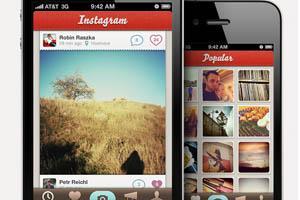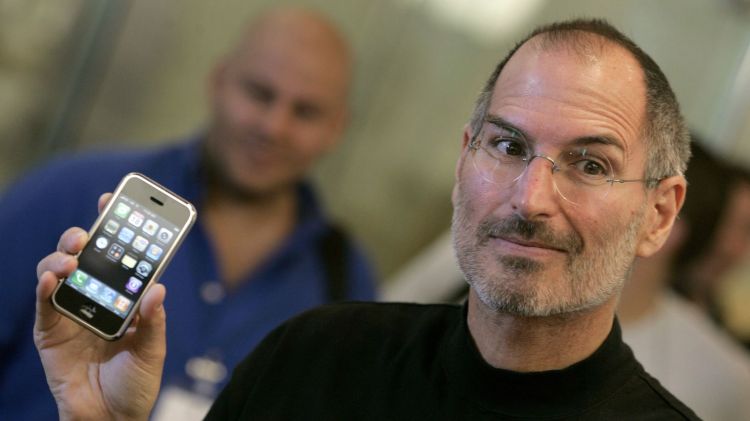I can still recall the ecstatic reactions that greeted the unveiling of the first iPhone by Apple CEO Steve Jobs in January 2007. And I still remember being absolutely sure, despite the next six months of tremendous hype and anticipation before it went on sale, that I would never buy one.
Those masses camped out in front of Apple Stores for days to buy the first ones? Fools. Jesus phone? Please.
So as the 10th anniversary of the iPhone arrives tomorrow, I find myself marveling at the degree to which this little gadget has touched and changed so many aspects of my daily life. No doubt you’ve seen, and will see, large analytical stories about how the iPhone changed the world, and it certainly has.
But for me, the real story of the iPhone is a personal one. In ways that are profound and not so profound, good and perhaps not so good, the iPhone has reinvented the way I do so many things like no other device created in my lifetime.
June 5th: The AI Audit in NYC
Join us next week in NYC to engage with top executive leaders, delving into strategies for auditing AI models to ensure fairness, optimal performance, and ethical compliance across diverse organizations. Secure your attendance for this exclusive invite-only event.
That this would be the case would have shocked the me of a decade ago.
I was a reporter at the San Jose Mercury News at that time, and the real wonder gadget for me had been the BlackBerry. I had one of the earliest versions, back when it looked like a pager and to get email on it you had to leave your PC turned on so a little program could forward the email to the BlackBerry. No matter. I was smitten.
By 2007, I had a BlackBerry that had a screen and the little trackball and a camera and it was amazing. For managing email, it was hard to remember how I ever lived without it. So when Steve Jobs talked about wanting to get rid of the keyboard, I thought: “Never!”
When I saw colleagues playing with their new iPhones, I felt not a twinge of envy. Mostly what I heard was people complaining about how terrible it was for making phone calls, because of the limited capacity and awful coverage of AT&T’s network, the only carrier that worked with Apple originally. And I couldn’t use my work email on it without some crazy workarounds. So, no thanks.
But two years later, my will broke with the release of the iPhone 3GS. By then, the writing was already on the wall for the BlackBerry. The iPhone calling had improved now that it was on a faster network. Most compelling, however, was the app revolution. People tend to forget, but the original vision for the iPhone was that people would use web apps. Bleh. Jobs shifted gears, and in the summer of 2008, the App Store was introduced.
There were 500 apps initially. Now there are more than 2 million. Suddenly, the utility of the iPhone seemed to explode.
I wanted one. A year later, I had one.
Looking back at my purchase history, in July 2009 I downloaded Facebook, Pandora, and Lightsaber Unleashed! Later, I also installed Skype, Yelp, Loopt, Where, Foursquare City Guide, Netflix, and some news apps.
And there, on October 10, 2010: Angry Birds. This was perhaps one of my biggest joys that was totally unexpected. I hadn’t really played video games since you had to go to the mall in the 1980s. I never did go through a console phase. But iPhone games! I was all in. Fruit Ninja. Doodle. More please!
At that point, another big life-changer was maps. How did I ever get anywhere without a mobile map? To this day, I can’t believe I traveled around Europe in 1990 with a paper map and a guidebook. Impossible.
But perhaps the biggest shift was the result of the iPhone camera. We had owned a digital camera of some kind for years. I uploaded those photos to various photo sites, and had hard drives full of them. But there was nothing like the convenience of having the camera in your pocket all the time, even if the quality at that point wasn’t great.
Of course, the camera has become arguably THE most critical feature of the iPhone. It’s amazing, as I wrote earlier this year, that even Jobs did not see the camera as one of the BIG THREE elements of the iPhone. (“An iPod… a phone… and an internet communicator.”)
In January 2011, I downloaded Instagram, a photo editing and sharing app that had launched three months earlier and had become a phenomenon. Two months later, I suddenly became addicted. My photo taking and sharing went through the roof.

All of this pulled me into the visual age, which has evolved into GIFs and emojis. I’m embarrassed by how much fun it is to send those types of messages. But I’m also not embarrassed, you know?
And this visual age has for me, and many others, made even basic phone calls feel obsolete. Anytime someone calls my iPhone, my reaction is: Why the hell is this person calling? Then they leave a voice mail. Really? So I have to listen to it and then call you back? Just text me. Or use Facebook Messenger, or WhatsApp, or Telegram, or whatever. It’s faster. And then I can send you an emoji.
Pocket computing
Today, I scan the apps on my phone, and it’s still amazing all the stuff I do with it. My banking, document management via Dropbox and Evernote, hailing a rideshare, booking an Airbnb, watching shows on Netflix, learning French via several apps. And on and on and on.
It was the iPhone that brought home the power of cloud computing to me, a rather vague concept for many years. Having instant access to so much of my stuff without needing huge amounts of storage has been another revelation.
It certainly changed the way I listened to music, starting with Pandora, and then accelerating with Spotify. Within a couple of years, ironically, I had lost all use for iTunes, which had once felt essential. Spotify gave me an almost unlimited musical library. Why did I need to sync and manage digital copies of music tracks?
Apple family
As the iPhone became the digital centerpiece of my life, our family began to evolve from being Windows users to being Mac users. I had both a Powerbook in the 1990s and had used Macs in college. But like much of the world, we had drifted into the embrace of Bill Gates.
My first step back toward Apple was actually getting the first video iPod in 2007. And iTunes became my most-used piece of software. I was listening to podcasts obsessively, and even watching feature films on that tiny little screen. But having an iPhone, it just seemed natural to buy a Macbook when I needed a new computer. My kids still use the Mac eight years later.
Meanwhile, we got an iPad 2, an Apple TV unit, an iPod Touch. and a second iPhone for my wife. I eventually upgraded to the iPhone 5 in 2012.
But there is where my relationship with the iPhone and Apple begin to shift again.
As a parent of two kids, one of whom inherited mom’s old iPhone 4, I am more acutely aware of the downsides of the continual presence of the iPhone in my life. I’ve lost count of the times my son has scolded me for paying more attention to my iPhone than to him. And honestly, the barrage of notifications has become increasingly stressful and overwhelming.
And all those Apple gadgets? I haven’t felt a compelling reason to buy a new iPad, or get the latest Apple TV unit. I did buy a new Macbook Air last year. My wife upgraded to the iPhone 7. But I still use the iPhone 5 I got 4.5 years ago, and it works perfectly fine, thank you very much. Our upgrade cycles are getting longer and longer, and I don’t see any potential features on the horizon that will make us change that.
I also have long since stopped scanning the top app charts, or downloading and experimenting with many new apps. Even when Pokémon Go mania hit, I downloaded it, tried it a couple of times, then deleted it.
These days, I find myself thinking more about what I could be doing with my new Amazon Echo, and what things could be connected to Alexa. I’ll be curious to try Apple’s HomePod when it’s released, but it seems pricey and frankly, I can use my old trusty iPhone to control my Sonos speakers just fine when I want to play Spotify.
We’ll see if this is a temporary lull in my Apple and iPhone love affair. We’re still deeply embedded in an Apple ecosystem at home, and by the same measure, I don’t see a compelling reason to abandon all the convenience and ease that offers.
And besides, I would never bet against Apple’s ability to leverage the iPhone to continue to change my life. Controlling my car? Controlling my home? Improving my health? Here’s hoping the next 10 years are even more revolutionary than the first 10.

